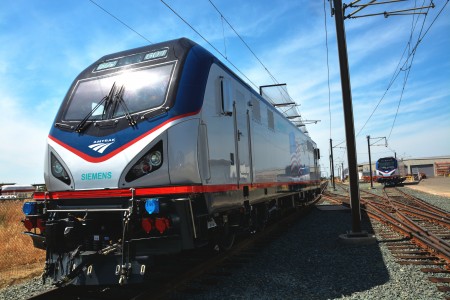Just in from the mailbox is this resin cast Island Model Works Nippon Sharyo South Shore/NICTD coach.
I've been eyeballing this thing on the Island Model Works Web site for the past couple of years but I finally took the plunge and ordered it a few weeks ago. Shortly after paying for it online, Island Model Works sent an email saying, "We're making the kit for you now. We'll ship it as soon as it's ready in a week or two." It arrived exactly two weeks later.
The IMW kit represents a car that has been brought up to the late/contemporary standard, which is to say it does not have the large white circuit breaker box on the roof between one of the pantographs and the center of the car, or lettering boards above the windows. If you're looking to backdate the cars as they appeared in the 80s and 90s, they will need to have these rather prominent details added back on--.005" or .010" styrene ought to do the trick for the lettering boards, and fabricating a streamlined circuit breaker box with styrene sheet shouldn't be too taxing for anyone already tucking into a relatively challenging resin kit like this.
And building this kit will be challenging. The parts are well molded and engineered, but have flaws that will need to filed, sanded, and occasionally filled or replaced--all of which is more or less normal with kits produced in this medium, regardless of subject.
I have been building resin models for over 20 years now--mostly military and sci-fi models--and can report that this kit is in really good condition right out of the box. The parts are straight and square and there are virtually no pinholes or bubbles in the resin. Where there are flaws in the molding, they are found mostly around the edges where the parts were separated from their molds. Most of this can filed and/or sanded smooth, with a minimum of additional filling and smoothing.
Some details are soft or heavy. The ends have simplified details, particularly the headlights that likely can be improved with some diesel detail parts and good lenses. The 'gong'-type bells on each end are likely to be replaced with Details West parts, and the diaphragms might need some detailing out as well. The steps are a bit heavy and rough, and if they don't clean up well with sanding and filing, they may be rebuilt with thin styrene or brass. Handrails and grab irons are molded on, but can be easily removed and replaced with brass wire.
The kit is intended to be enhanced with components furnished by the builder. The kit is not powered, and does not include instructions, couplers, wheel sets, or pantographs. IMW does offer separately two different decal sets for this model--the older style with broad orange window stripes, and the newer style with a skinny window stripe. I ordered both, because I'm indecisive.
The IMW Web site suggests Sommerfeldt 968 pantographs and drive components from the Proto 1000 Budd RDC or the Northwest Shortline Stanton power truck. The floor appears to have holes and slots ready to accept trucks and motor from the Proto 1000 RDC. Additional bolsters intended to accommodate dummy trucks are included, as well as a stout bolster with an offset that appears to my eye to be an adapter for the NWSL Stanton power truck.
As indicated in the photo, I've rustled up a Walthers Proto 1000 RDC (one of the later DCC ready variety), from which I intend to extract not only the motor and trucks, but also the circuit board. The RDC drive is a real gem, and I especially appreciate that there is a flywheel. The circuit board provides a DCC socket as well as pretty good lighting. However, I am somewhat concerned about the mechanical properties of the resin--will those curved slots, floor holes, and motor mounts stand up to the weight and torque of the finished car?
Speaking of weight, I am concerned about adequately weighting the car while also adding the requisite stiffness to that floor--am thinking that a steel weight from an 87' high cube box car might be a good starting point. Meanwhile, an ambitious modeler with machine tools at the ready might even want to consider major milling surgery on the metal Proto 1000 RDC frame to remove all of that diesel underbody detail and and modify the frame ends and above-floor portions to fit the IMW pilots and body shell.
Does this all sound like a lot of work? Maybe, but this level of effort harks back to 30 or 40 years ago when there were still old-school craftsman-style kits to be had. As late as the early 80s the Walthers catalog showed pages and pages of heavyweight passenger, North Shore, and Pennsy MP54 'craftsman' kits that featured wooden floors and rooves, soft metal ends, and stamped metal sides--and if pre-streamline passenger, traction, and electrics were your thing, this is how you built out your rolling stock roster.
This kind of resin kit is, in my estimation, a modern-day craftsman kit. When I started in model railroading in the late 70s, those old craftsman kits were what I aspired to and expected to build after I 'arrived' as a model railroader. It's only fitting that I'm excited about building the 21st century answer to those old kits.










































